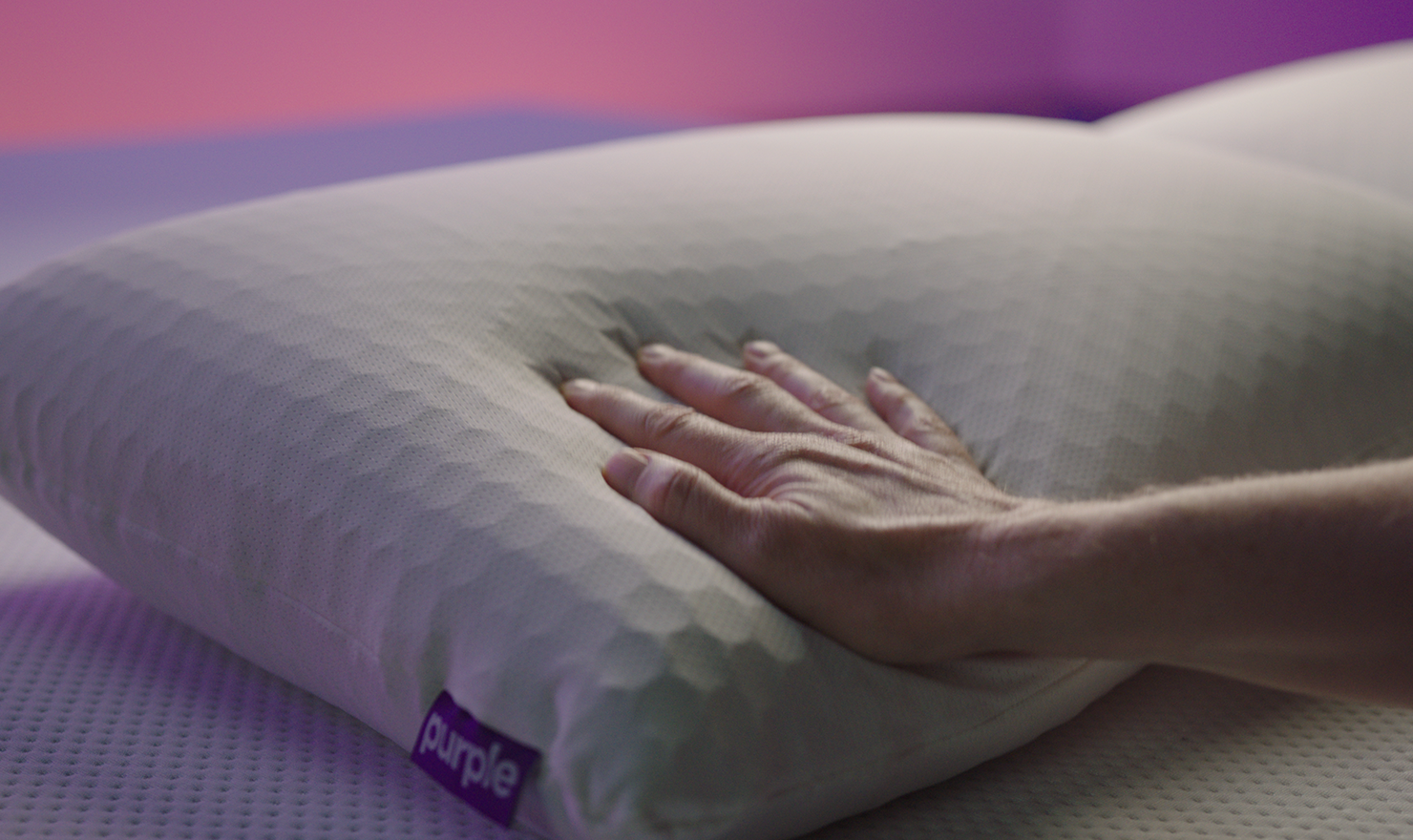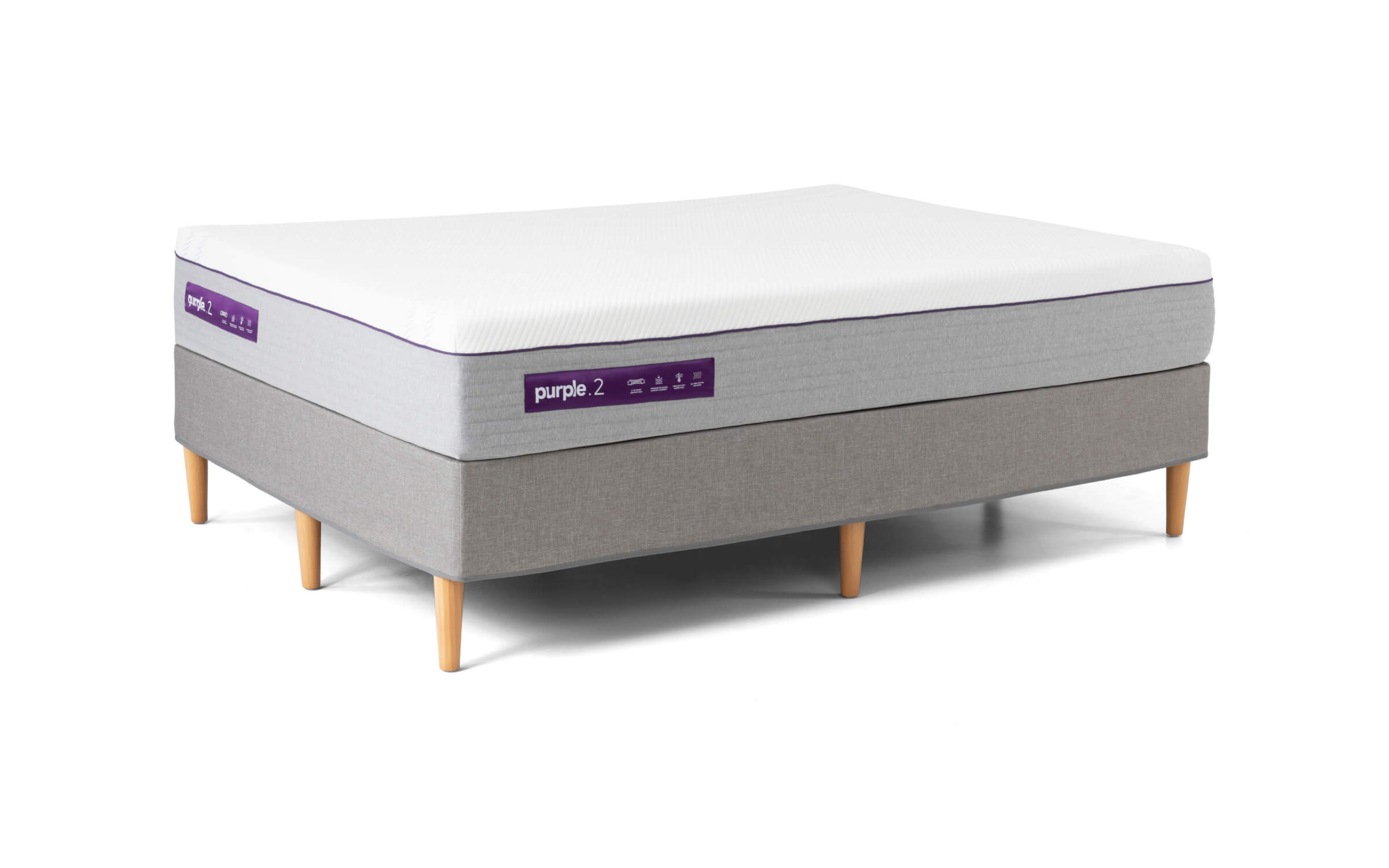The Best Latex Pillow | Purple Harmony Pillow | Purple
The Purple® Harmony Pillow is the only pillow with innovative 360º Purple Grid™ Hex. Combined with the hypoallergenic Talalay Latex Core and a moisture-wicking cooling cover, the Harmony Pillow provides just the right amount of soft support your sleepy head has been dreaming about.
Everything works in perfect Harmony
With pillow perfection in mind, we invented the world’s first and only pillow with Purple Grid Hex. We tested more than 50 prototype combinations over the course of 1 ½ years to create the ideal balance of soft, cool, and responsive No Pressure® Support your sleepy head dreams about.
The one. The only.
The Purple Grid™ Hex
With pillow perfection in mind, we invented the world’s first pillow with Purple Grid Hex. We tested more than 50 prototype combinations to create the ideal balance of soft, cool, and responsive No Pressure Support your sleepy head dreams about.
Stays Cool All Night
Only the Purple® Harmony Pillow has continuous airflow through over 1500 open air channels in the Purple Grid Hex to help you keep a cool head through the night.
No Pressure Support
The only pillow with Purple Grid Hex technology, the Purple Harmony instantly adapts to your head and neck for personalized, premium comfort.
Doesn’t Fall Flat
Purple Grid Hex is made of incredibly durable, non‑toxic proprietary material, which means your pillow keeps its shape over night and over time.






by Jake
About a year ago I tried out the purple pillow and didn’t find much success with it due to how heavy it was and ended up donating it. After that experience I waited until the plush pillow came out and I really enjoyed that pillow but it did seem a little light. And here we are now with the purple Harmony pillow which, true to the namesake Is a perfect balance of the two pillows culminating in the most comfortable pillow I’ve ever used! I bought two when they first came out and I always find myself falling asleep super quick on these pillows. They are truly marvelous.
by Ryan
I love my new pillow. It keeps my head cooler at night and provides the perfect support for me as a side sleeper
by scott
This is by far the most expensive pillow I have ever bought, but it is also the BEST pillow I have ever slept on. This thing is the perfect blend of soft and support. It stays cool, so I don’t need to flip over to the cool side later. I am going to need another one, because my wife and kids keep trying to steal it.
by Joe
I tried describing this pillow to a friend who has similar neck issues to mine, and all I could say is, “It’s like a cloud.” I have cervical arthritis and usually wake up (or am woken up by) neck pain and loss of feeling in my hands. The first night I tried the Harmony pillow I was ready to return it the next day, but decided to keep going. It is quite different from anything I have ever slept on. So far so good. I actually got up this morning with no neck pain. That in and of itself is worth 5 stars. Plus it’s also like getting a soft hug all night long, but on your head, unless you also like to wrap your arms around your pillow. I got the “tall” version, since I’m almost exclusively a side sleeper.
by Janel
extremely soft, bouncy, comfortable and supportive
great height for someone who sleeps on their side (thus needing a higher pillow to make up for shoulder height) or someone who would generally use 2 pillows (tall version)
Stays cool
Doesn’t go flat, maintains height, shape and support
Funny smell out of the package goes away quickly
Thanks for the amazing pillow, Purple. The only thing that could make it even better would be to offer an option with a shoulder notch for side sleepers also 🙂